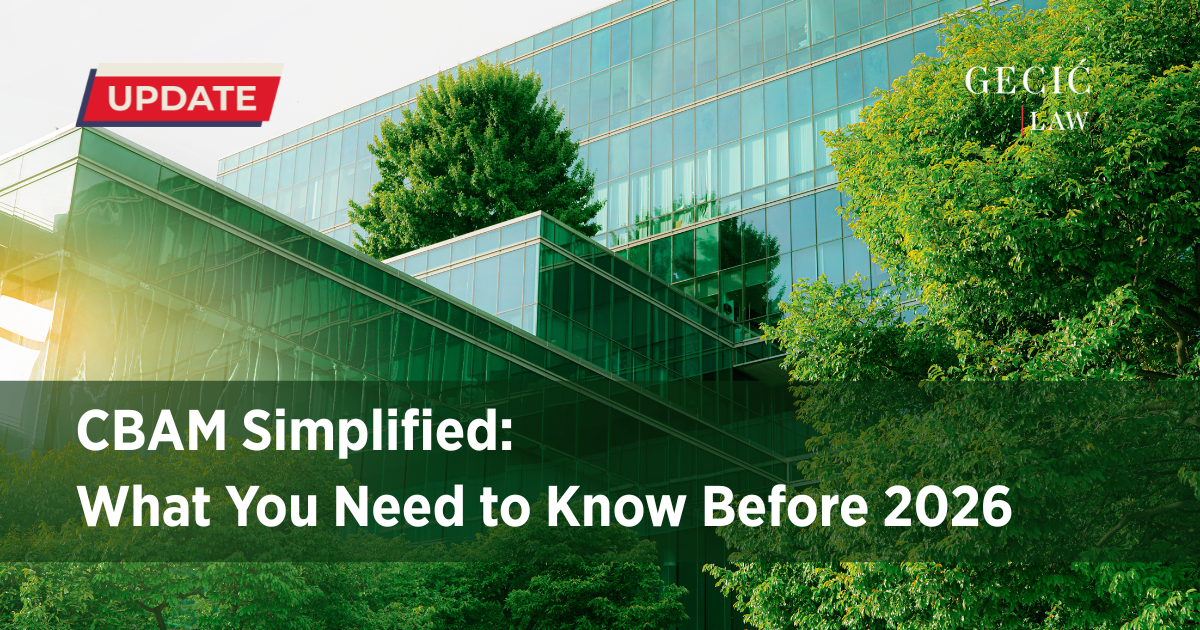

On October 20, 2025, the Regulation (EU) 2025/2083 — the first significant amendment to the regulation establishing the Carbon Border Adjustment Mechanism (CBAM) – entered into force. This “CBAM Simplification Regulation”, part of the Omnibus I package, reflects the European Commission’s commitment to reducing administrative burdens while preserving CBAM’s enforcement strength. The arrival of the full CBAM regime in January 2026 marks a key milestone.
The Simplification Regulation introduces targeted but meaningful adjustments designed to improve predictability for importers while safeguarding CBAM’s environmental purpose.
For businesses, simplification brings welcome clarity at a critical moment. By easing administrative pressures, the EU hopes to spur early and robust compliance. This approach also aims to quickly level the playing field between EU and non-EU producers. The new de minimis threshold matters especially for small to mid-size importers who previously struggled with high reporting costs for low-volume shipments. It may reduce CBAM exposure for many firms trading limited quantities of steel, aluminum, cement, or fertilizers.
However, the regulation also strengthens enforcement: authorities can now target artificial import splitting to evade the 50-tonne limit. Non-authorized importers who exceed the threshold face significantly higher penalties than in earlier frameworks. This aligns CBAM’s deterrent power more closely with that of the EU ETS. In short: lighter load for compliant operators, higher stakes for non-compliance.
The Simplification Regulation constitutes the first step in the EU’s broader plan to refine CBAM ahead of its definitive phase. Several legislative packets are expected to follow before the end of 2025:
One of the forthcoming implementing or delegated acts will define the methodology for determining CBAM benchmark values and default values. Until they enter into force, businesses should rely on verified actual data or available default values published by the Commission.
Finally, by the end of 2025, the Commission will undertake a comprehensive review under Article 30 of the CBAM Regulation. This includes examining possible extensions to new product categories (e.g., organic chemicals and polymers) and possibly certain services, including transportation. Businesses should monitor developments closely and align compliance strategies with emerging rules.
From 1 January 2026, the definitive phase of CBAM begins. While reporting will continue, importers will also assume financial obligations for the embedded emissions in exports to the EU. The first surrender of CBAM certificates will take place by 31 May 2027 for imports made in 2026, marking the transition from informational reporting to enforceable compliance.
Businesses should continue to map supply chains and track embedded emissions in line with the CBAM methodology set out in the Implementing Regulation. Since January 2025, the EU method has been the only accepted reporting approach under CBAM. Importers should also confirm correct CN code classification (Annex I), maintain cumulative annual records per importer, and begin preparing for the verification process that will accompany annual declarations once the Commission finalizes the detailed rules on verifier accreditation and verification procedures.
Those expecting to exceed the 50-tonne annual exemption threshold should apply early for authorized CBAM declarant status via the CBAM Registry. In parallel, companies should budget for CBAM certificates, priced at the average weekly EU ETS allowance price, strengthen internal systems for timely and accurate submissions, and consider long-term decarbonization strategies to manage future exposure and maintain competitiveness.
In addition, businesses should closely follow the adoption of upcoming secondary legislation, which will set out detailed methodologies for embedded emissions, adjustments to free allocations, and rules for verifier accreditation.
Finally, as penalties under CBAM will be severe, timely preparation and accurate data management will be essential. This is to ensure full compliance and avoid financial exposure.
The EU’s newly adopted CBAM Simplification Regulation marks a crucial moment for Western Balkan economies. Many of them maintain strong trade ties with the EU in carbon-intensive sectors like steel, aluminum, and cement. The new 50-tonne annual exemption and deferred certificate purchase until 2027 bring short-term relief, especially for smaller exporters. However, the message is clear: the transition to low-carbon production is inevitable.
As the EU tightens carbon border rules, Western Balkan producers must accelerate decarbonization, transparency, and alignment with EU standards to remain competitive. With full CBAM enforcement starting in 2026, regional governments and industries face both an urgent compliance challenge and a strategic opportunity to advance toward the EU Green Deal framework and deepen market integration.
Click the link to access a PDF version of Regulation (EU) 2025/2083.